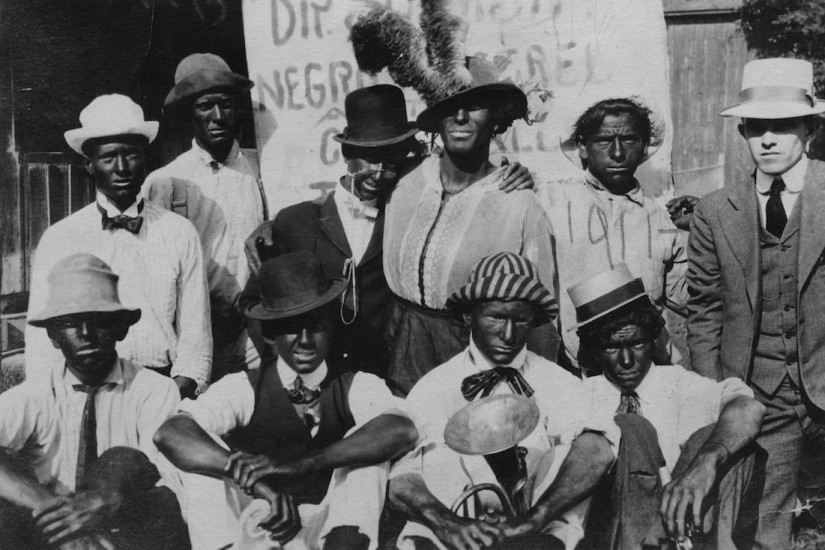During Jim Crow’s century-long reign, this strange, visible and highly pervasive world of blackface minstrelsy took hold in nearly every city and town in the United States. California hosted more amateur blackface shows per capita than any other state in the post-Civil War period. The shows and parades were so central to civic and campus life that it is difficult to find a university yearbook from the first half of the 20th century without a blackface image.
Amateur blackface minstrelsy served the U.S. government as something akin to an official culture. A child might be required to play a minstrel in school, where curriculums derived from state guides featured plays and music selected by the Works Progress Administration. As a young man, he might perform in and watch blackface while serving in the armed forces. The military was led by prominent Elks members, and it taught Americans to embody stereotypical blackness and transmitted racist proslavery antebellum culture in the form of Stephen Foster songs such as “Oh! Susanna,” “Camptown Races” and “Old Folks at Home.” Such government-sponsored racism persisted in some forms through the Nixon administration. When he returned home, he would enter a university — on the G.I. Bill — where blackface was again a ritualized cultural expectation of white manhood. Finally, as a businessman, he would join fraternal orders that perpetuated the cycle.
How did this monstrous, mass-commercialized empire of amateur blackface minstrelsy end? And why have you never heard about any of this before?
The answer has to do with a largely forgotten civil rights victory spearheaded by black mothers in the 1950s and 1960s. These women, typically black Rosie the Riveters married to veterans who believed in the “Double Victory” campaign — freedom at home and abroad — stood on the front lines of school desegregation. Once those walls had been breached, they were horrified to discover that the music, poems, literature and plays to which their children were exposed were forms of amateur blackface minstrelsy. They ran a national media campaign and filed legal cases to ban blackface performance, dress-up, and texts from schools and government institutions.
Ironically, these courageous and determined mothers who envisioned a better world for their children were so successful at driving blackface out of the mainstream that schools now rarely (if ever) teach its history — which is why so many Americans are uninformed about how the practice persisted and why it is so offensive and hurtful to African Americans.
